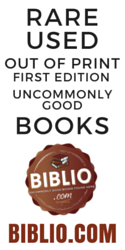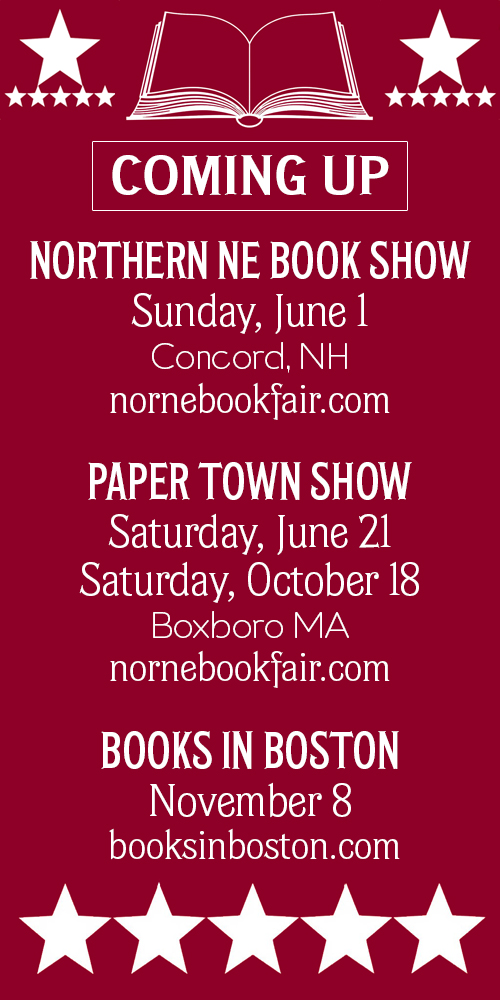The Contrarian Bookman
A few months ago Kathy Leab, co-editor of American Book Prices Current (now published on the web), had some interesting things to say about books made from paper and cloth. Despite the accepted wisdom about the eventual demise of printed books and bookstores and the increasing popularity of e-books, she remains personally confident about the future of traditional books. “Books won’t disappear any more than horses didn’t go away after the invention of the automobile” – is the sense of what she said, even though the words aren’t exactly hers.
A little over a hundred years ago we’d all be using horses for working our farms or traveling any distance, and even though their everyday work has long since been taken over by the family car, some horses remain. Only the demographics have changed, which is just a fancy way of saying the people who own them aren’t the same. Think about Thoroughbred horse racing, polo, show jumping, dressage classes, fox-hunting, draft-horse competitions, riding lessons, carriage rides in Central Park, and so on.
So maybe we don’t need horses anymore, since most of us own or have the use of a car. I think the comparison with books is an intriguing one, and anecdotal evidence is starting to pile up indicating the direction of the e-book revolution. Pamela Grath commented on this last month in our “Letters” column. She said that in her experience as a bookseller the most enthusiastic e-book users seem to be those living in cramped quarters, including elderly folks who are down-sizing and readers with failing vision who are helped by the font-enlargement features. Also, out-of-copyright books can be downloaded rather cheaply, which is clearly a benefit to people with modest incomes.
It already appears that the great e-book debate is sorting itself out along demographic lines – a future with Kindles and Swiss army phones for the masses; traditional books and private libraries for people with a little more to spend. Does this mean that years from now, as more publishing is done online, that the printed books that remain will be collected the way some people now collect original art or limited edition prints? If so, let’s hope that at least they’ll be read and not languish inviolate and untouched in clam-shell boxes and solander cases. There’s really no argument here. It’s whatever suits you best. Choice is good. I think.
About the time of these conversations and e-mail exchanges, we received a catalogue from a youngish bookseller based in southern California. The twenty-seven page catalogue, his third, is lavishly illustrated in color, printed on coated stock, and contains fifty one items ranging in price from $750.00 to $45,000. All of the books, including assorted rarities and literary high spots, are very well described, both in terms of bibliographical detail and physical condition – not the sort of books typically found on Amazon or at your local charity book sale.
We’ve also been hearing rumblings and rumors lately that a few contrarian booksellers, both in this country and the UK, are quietly buying up the stocks of retiring or discouraged booksellers, sorting the wheat from the chaff (which almost begs the question – could some of today’s chaff turn out to be tomorrow’s wheat?), and saving the best for what they believe will be the ultimate renaissance of the printed book.
If these dealers turn out to be the Warren Buffetts of the book world – buying when all others are fearful, and selling, or continuing to hold, when others indulge in speculative binges – should they ultimately feel guilty for any success they might have based on observing herd behavior and doing the opposite? Think about what’s happened to the overall economy, especially the real estate sector, in the past three or four years. Those who spent too much and borrowed too much, because everyone else was doing it, have had a fairly rough time. Others watched with amazement and hung on to their wallets throughout the speculative fervor – delaying their home-buying and purchase of big-ticket items until prices were more rational or at least more affordable. In one sense, I suppose, a twisted cynic could argue that making personal financial or investment decisions (that turn out for the best) based on an intuitive understanding of crowd behavior is itself a form of insider trading and as such ought to be a punishable offense. After all, for the past few decades living within one’s means has all but been considered to be unpatriotic.
At any rate this seems to be an auspicious time, especially for younger bibliophiles, to be on the lookout for good books in the still familiar, bound format – whether new, used, out-of-print, antiquarian, or rare. It’s not every day we’ll get the chance to acquire at the beginning of what I think will be a long term upward trend in appreciation of the printed book as an artifact that is useful, durable and also, depending on your taste, aesthetically pleasing.
*
In a response to our suggestion last time that some of our readers might want to send a note to Paul Minet , who has been unwell for much of year, several of you were kind enough to write. However, in a letter just received from Sheila Minet, she writes “We have just had a lovely letter from a reader of BSM in Tennessee, who says our bookstore will be first on his list of places to visit when he comes to UK! Please can you let everybody know that there is no longer a bookstore to visit!”
Piccadilly Rare Books, the large double-fronted shop in Ticehurst, was closed this past summer and the premises were divided into a coffee shop and a separate interior design business. Both are now up and running.
The remaining stock of Piccadilly Rare Books was transferred to Baggins Book Bazaar of Rochester, in the neighboring county of Kent. Paul was also the owner of Baggins, one of the largest bookshops in England, and the entire business, with their combined stocks, has been turned over to the employees. For anyone thinking about visiting Baggins, the address is 19 High Street, Rochester, Kent, ME1 1PK, England.
*
If you sense that the Specialists’ Directories and Open Shop Guides are getting shorter with each passing issue, your perceptions are correct. These features were originally intended to give subscribing booksellers (nowadays greatly outnumbered by readers and collectors), who remain on our “A-List” some advertising exposure at no additional cost. If you’re a bookseller and in doubt about your status, check the mailing envelope for every issue – each one serves as a renewal notice and also carries a printed message asking you to look at the top line of your address label. If it reads “Comp (B-List)” you no longer have any trade listings but will continue to receive this magazine at no cost.
It may very well be that these guides and directories have long since outlived their usefulness and should be replaced by more relevant content and features of general interest. For more information please see “Patrons of Words on Paper” on page 39.
*
At the moment it’s about a week before Thanksgiving and the seed catalogues will start arriving, so writing about autumn in the garden here in Cazenovia seems natural. This morning we harvested the last of the veggies – Swiss chard, leeks, red leafed lettuce and beets. Fortunately the leeks store well, meaning we’ll have plenty of leek soup between now and spring, when we’ll be switching to asparagus. As it happens, Raquel makes a fantastic leek soup that rivals that served at La Petite Maison in nearby Waterville, one of the finest French restaurants in New York.
The frosts finally laid the dahlias low a couple days before the end of October and one of the newer varieties, Blackberry Swirl, did especially well so we should have plenty of extra tubers to give away in the spring. Other plants we have to share include an attractive variety of crocosmia with red flowers and slender cascading leaves resembling Siberian iris, and something called peacock orchid, one of Raquel’s favorites, with small purple-hued, orchid-like flowers and with leaves similar to crocosmia. We brought back one peacock orchid bulb (corm) when visiting our younger son in Portland a few years ago – the corms need to be lifted in the fall but the way they multiply reminds me of the old story about the loaves and the fishes.
Cold weather doesn’t mean a complete end to color in the garden – the brilliant reds of burning bush hang on for a while, white alyssum, unfazed by temperature extremes, keeps on blooming as if nothing’s changed, and with the end of hot weather the primula (primroses) revive and bloom all over again. Cool and damp is what they like.
We cut down three trees a couple weeks ago (a dead ash, nearly-dead cherry, and a black walnut that was harming nearby vegetable plants and flower beds), thinning our small forested area and adding considerably to our wood supply. I’m looking forward to long winter evenings by the fire, digging through seed catalogues and reading at least a few more of the hundred or so gardening books in our collection.


























